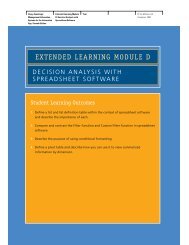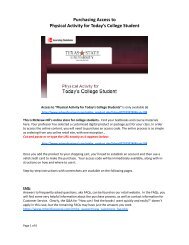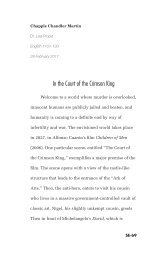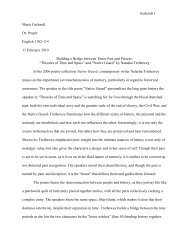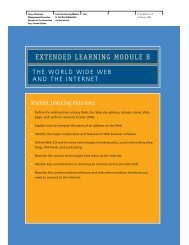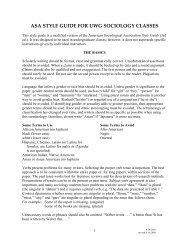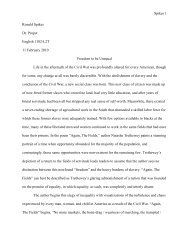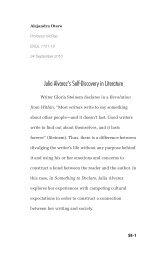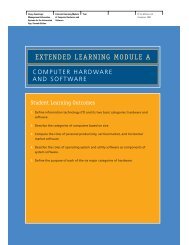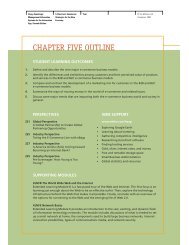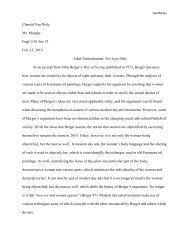ENG032 Developmental English - McGraw-Hill Learning Solutions
ENG032 Developmental English - McGraw-Hill Learning Solutions
ENG032 Developmental English - McGraw-Hill Learning Solutions
Create successful ePaper yourself
Turn your PDF publications into a flip-book with our unique Google optimized e-Paper software.
ENG 32 GRAMMAR NOTES<br />
J.Covington, Instructor<br />
I. The subject of a sentence is always a noun or a pronoun. The subject tells who or what a<br />
sentence is about.<br />
a) The children played outside for hours.<br />
b) Those boxes need to be unpacked.<br />
II. The verb in a sentence tells what the subject is doing. Some verbs show action (hop, skip,<br />
dance run, play).<br />
Some verbs show a state of being. The being verbs are am, is are, was, were, been, be.<br />
a) My friend ran the marathon.<br />
b) Scrabble is a fun game.<br />
III. A fragment is an incomplete thought and cannot stand alone and make sense. A fragment<br />
may begin with a subordinator or dependent word. (See page 98, textbook). A fragment<br />
may result from (a) lack of a subject – Rolled down the hill, (b) lack of a verb – The truck<br />
down the hill.<br />
***The most common way to correct a fragment is to attach the fragment to the sentence<br />
before or after the fragment.<br />
a) Because Mom likes fruits. She eats them daily.<br />
Because Mom likes fruits, she eats them daily.<br />
b) Sally took a nap. In the middle of the afternoon.<br />
Sally took a nap in the middle of the afternoon.<br />
IV. A run-on sentence is two or more sentences written as one sentence with no punctuation<br />
between the sentences.<br />
** My neighbor is a great musician he performs often.<br />
A comma splice sentence is two or more sentences written as one sentence with a comma<br />
between the sentences.<br />
** My neighbor is a great musician, he performs often.<br />
A comma alone cannot join complete thoughts.<br />
A comma splice is a form of a run-on sentence.<br />
WAYS TO CORRECT TURN-ONS/COMMA SPLICES<br />
1) Make two separate sentences.<br />
My neighbor is a great musician. He performs often.<br />
2) Use a comma and a coordinating conjunction (for, and, nor, but, or, yet, so).<br />
My neighbor is a great musician, and he performs often.<br />
55



